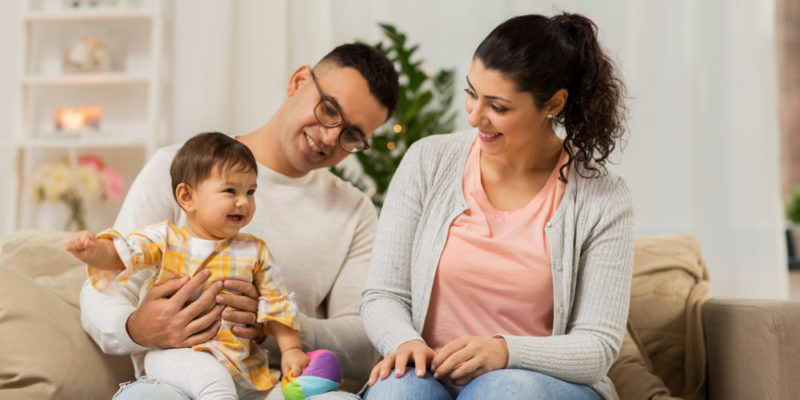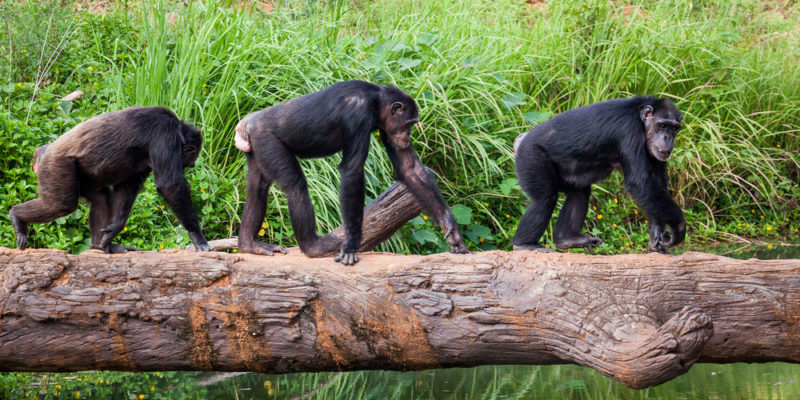We explain what hominids are, what their diet is like and their characteristics. In addition, current species and their conservation.
What are hominids?
Hominids , members of the Hominidae family, are known as a group of tailless primates , among which there are four genera. It includes 8 living species, such as humans , orangutans, gorillas, chimpanzees and bonobos.
This term was formerly used to refer to bipedal primates close to humans , that is, those belonging to the genus Homo and others close to it, such as Australopithecus . But today that group is called hominins , considered as a subtribe.
At present, the great apes (genera Gorilla , Pan and Pongo ) that were formerly considered to be of the Pongid family are also considered hominids. That is to say that hominids are the superior primates, including among them the human being and its close species.
Origin of hominids

Hominids are native to Africa, except for the orangutan, which comes from Asia (specifically Borneo and Sumatra).
Although fossils have been found in Europe , Asia and Africa dating from the Miocene period (about 20 million years ago), only humans (genus Homo) spread throughout the world.
In fact, only Homo Sapiens managed to cross naturally to the American continent, to which no hominin is native.
Evolutionary genetic study of these species has revealed that chimpanzees, gorillas, and humans share the same clade . On the other hand, orangutans are a bit further apart phylogenetically.
Difference Between Hominids and Hominins

These terms can still be used as synonyms or one like the other in error. But the difference is not difficult to understand: hominids are primates without tails , with which the human being shares a good part of his genome, but which constitute genera apart from Homo (including him). I mean, it’s a bigger category.
In contrast, hominins are the bipedal, tailless hominids that are very similar to humans, including the extinct species that led to the evolution of humans , such as Australopithecus erectus , Homo erectus , etc. In this case they are considered a subtribe of the family Hominidae .
bodily characteristics of hominids
Hominids are the largest primates in existence. Although it can vary with the species, its weight can range from 48 to 270 kilograms . In addition, there is a significant variation in size between males and females (sexual dysmorphism).
In general, they present a shortening of their upper extremities , which allows them to walk upright or semi-erect. This is an important difference from the skeleton of lower primates. Their brains are relatively large and complex. Their nostrils are close and pointed forward and down.
hominid behavior

Hominids exhibit complex social behavior , with different vocalizations and facial expressions. Their sexual behavior is elaborate, not necessarily subject to reproductive purposes, but linked to pleasure, which distinguishes them from other animal species . They all build elaborate nests and care for their young for a long period.
Hominid feeding
The hominid diet is omnivorous, capable of mixing fruits, vegetables , leaves, mushrooms and seeds , with meat, fish and insects , although the basis of their diet is usually vegetarian. Its teeth are similar in all species and it has 32 pieces, prepared to cut, tear and grind.
hominin locomotion

Hominids are agile tree climbers, with the exception of the genus Homo , which is more adapted for foot-walking. Most hominids walk in an upright or semi-upright posture, on their hind limbs.
Some species support themselves on their forelimbs , or assist each other by stopping. However, they can also walk holding things, feeding or holding on with their upper limbs.
Link to human evolution
It is commonly said that the human being comes from the monkey , although it is not literally so. It is not that monkeys have become human beings, but that human beings are the product of a genetic and evolutionary divergence that has a common ancestor with other primate species.
That is to say that the other species of hominids are our distant cousins , since they are also the result of their own evolutionary process. It is not true that human beings are “more evolved” than them, as if the rest of the species had stopped in time .
The link with our common ancestor with the other hominids can be seen much more clearly in the slow evolution of hominins , that is, of the previous species of the genus Homo that have already become extinct. However, it is estimated that there is only a variation of 1% of the genome between our species and others close to it.
Main current species

Extant hominids are classified into four different genera:
- Gender Pongo. Includes the current species of orangutans, native to South Asia (Malaysia and Sumatra). His name comes from the Malay Orang Hutan , which means “Man of the forest “. Some species are: Pongo pygmaeus , Pongo abelii and Pongo tapanuliensis .
- Gorilla genus. Herbivorous primates from South Africa, black in color and large, the largest of the existing primates. Its ferocity is known and its genome is the closest to that of the human being after the chimpanzee. Some species are: Gorilla gorilla and Gorilla beringei .
- Genus Pan. Includes the species of chimpanzees, the primates genetically closest to humans. Among them are the common chimpanzee and the bonobo or pygmy, all Arican species. Some species are: Pan trogolodytes and Pan paniscus .
- Homo genus. The only current species of the genus Homo, corresponding to the human genus, is Homo sapiens , the scientific name for humanity. Formerly there were other species, all extinct.
Major extinct species
Just as there are existing or current species today, many other hominid species have already disappeared, leaving only their fossil record for us to study. The main of them are:
- Subfamily ponginae :
- Gigantopithecus
- Ankarapithecus
- I put hooijeri
- Subfamily hominidae :
- Homo habilis
- Homo rudolfensis
- Homo ergaster
- Homo erectus
- homo neanderthalensis
- Australopithecus afarensis
- Paranthropus robustus
- Neopithecus
- Hispanopithecus
- Dryopithecus fontani
State of conservation

Many of the wild hominin species, native to Africa and Asia, are at serious risk of extinction, not because of natural selection, but because of the hand of human beings. Among them are:
- Sumatran orangutan. With around 6,667 living specimens.
- Bornean orangutan. With around 61,234 living specimens.
- Tapanuli orangutan. With just 800 living specimens.
- western gorilla. With 200,000 living specimens.
- Eastern gorilla. With nothing more than 6,000 living specimens.
- common chimpanzee. With around 100,000 living specimens.
- Bonobo chimpanzee. With barely 10,000 living specimens.
The above content published at Collaborative Research Group is for informational and educational purposes only and has been developed by referring reliable sources and recommendations from technology experts. We do not have any contact with official entities nor do we intend to replace the information that they emit.














